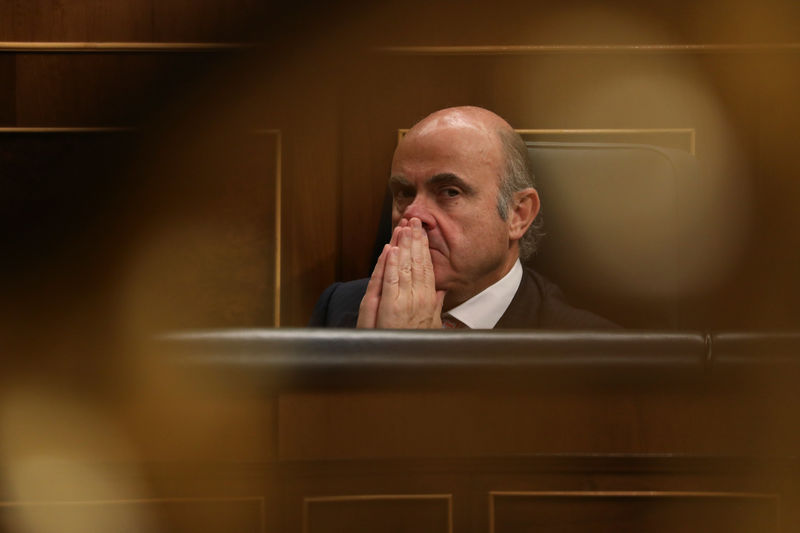 © Reuters. Spain’s Economy Minister Luis de Guindos attends a plenary session at Spain’s Parliament in Madrid
© Reuters. Spain’s Economy Minister Luis de Guindos attends a plenary session at Spain’s Parliament in MadridBy Abhinav Ramnarayan
LONDON (Reuters) – Euro zone government bond yields rose across the board on Wednesday as market speculation swirled over the next European Central Bank chief at a time when monetary policy is the main threat for bond markets.
Euro zone finance ministers on Monday chose Spanish Economy Minister Luis de Guindos to succeed ECB Vice President Vitor Constancio in May, a move seen boosting the chances of someone from one of the “core” euro zone countries becoming head of the ECB next year.
This in turn is seen as increasing the likelihood that the central bank takes a more “hawkish” stance in the future, erring on the side of tighter policy, which is negative for European government bonds.
For example, Bundesbank President Jens Weidmann, seen as one of the candidates for the top policymaker position, has consistently argued against the ECB’s 2.55 trillion euro bond-buying scheme that pushed yields to record lows in recent years.
“The ECB governing council is quite dovish at the moment, so policy could shift if the next ECB chief is from one of the core countries,” said DZ Bank analyst Pascal Segesser. “It could bring the focus back to interest rates again and bring in a new rates regime.”
The ECB is largely expected to end extraordinary stimulus sooner rather than later, potentially by the end of 2018, having cut the program by half at the start of the year.
This has pushed bond yields sharply higher in recent weeks, but a recent sell off in stocks and oil, along with some political uncertainty in Germany, kept a lid on yields on speculation that the ECB would tread cautiously.
That changed to an extent on Tuesday, with yields up 1-3 basis points across the board.
The yield on Germany’s 10-year government bond yield, the benchmark for the region, was up 2 bps to 0.75 percent, heading back toward a multi-year high of 0.808 percent hit earlier this month. ()
French government bonds mirrored that move, taking the country’s 10-year borrowing costs back up about 1 percent. ()
Speculation over inflation in the United States has also contributed to a recent rise in yields, and as the U.S. Treasury prepares to sell over a quarter of a trillion dollars worth of new debt this week, borrowing costs were up both sides of the Atlantic.
The yield on 10-year U.S. Treasuries were up 4 bps to 2.92 percent () and the “transatlantic spread” over the German equivalent was at 216 bps, close to a recent high.
Later on Tuesday, Germany is scheduled to auction 5 billion euros of 2-year “Schatz” while Spain is expected to launch a syndicated sale of 30-year bonds, deals that should test market appetite for European debt in an environment of rising yields.
Fusion Media or anyone involved with Fusion Media will not accept any liability for loss or damage as a result of reliance on the information including data, quotes, charts and buy/sell signals contained within this website. Please be fully informed regarding the risks and costs associated with trading the financial markets, it is one of the riskiest investment forms possible.
Source: Investing.com



























